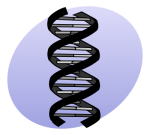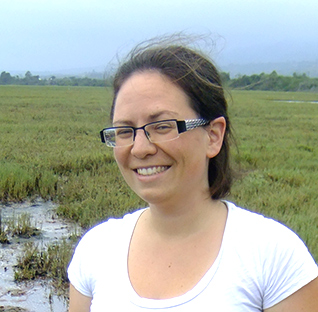Originally posted May 4, 2009
What is Epigenetics?
 Although many of us are familiar with the concept of a genome, far fewer are familiar with the epigenome. In today’s post, I’ll give you the low-down on what epigenetics is all about. It’ll be a little dry, but I think it’s important to have a cursory understanding of how the epigenome works. In upcoming posts, I’ll tell you about how the environment interacts with our epigenome and has long-term effects on stress responsiveness, reproduction and obesity, among other things.
Although many of us are familiar with the concept of a genome, far fewer are familiar with the epigenome. In today’s post, I’ll give you the low-down on what epigenetics is all about. It’ll be a little dry, but I think it’s important to have a cursory understanding of how the epigenome works. In upcoming posts, I’ll tell you about how the environment interacts with our epigenome and has long-term effects on stress responsiveness, reproduction and obesity, among other things.
Each cell in your body contains a full copy of the genome. If each cell were expressing all of the genes in the genome, then you’d be in a lot of trouble. For example, you wouldn’t have any specialized cells! Our epigenome is what turns genes on and off as needed. For example, the reason that your liver cells express one set of genes and the cells in your heart express another set is because the epigenome has turned the liver genes on in your liver and the heart genes on in your heart. The study of the mechanisms that control gene expression, but which are not coded for in the genetic sequence itself, is known as epigenetics.
How does the epigenome turn a gene on or off?
The packaging of DNA influences the frequency with which particular genes are expressed. DNA is packaged into what is called anucleosome, which is comprised of DNA wrapped around a set of proteins known as histones. Both DNA and the tail end of the histone are subject to extensive modification. Before a gene can be expressed, molecules known as transcription factors need to be able to bind to the gene’s promoter region in order to begin the process of transcription (think of transcription as turning genes on). Modifications to the DNA and its associated proteins can either promote gene expression by making it easier for these transcription factors to bind or can repress gene expression by making binding more difficult.
Two of many ways to modify histone tails are methylation and acetylation. Methylation involves the addition of a methyl group to “CpG islands”, or regions of DNA where cytosines are followed by guanines. Methylation prohibits transcription factors from binding to the DNA by either directly blocking them or by recruiting additional proteins to the site, which block the transcription factors indirectly.
Acetylation, on the other hand, makes DNA more accessible to transcription factors. Histone proteins have a positive charge, which attracts it to the DNA. When an acetyl group binds to a specific part of the histone (known as a lysine residue), then its positive charge is neutralized and this frees up some space near the DNA. This free space makes it easier for transcription factors to bind to DNA and express the gene.
Below is a video that provides a great visualization of the genome as well as the process of acetylation:
How does the epigenome generate individual variability?
The epigenome is responsive to numerous cues early in development, resulting in long term changes in gene expression. Because individuals experience different physiological, developmental and environmental cues, epigenetic modification is an important mechanism for generating individual variability. Some of the most well-known examples of the early environment mediating epigentically programmed behavioral differences come from studies on the effects of maternal behavior on the behavioral phenotype of their pups in rats. Some recent studies have also begun examining this phenomenon in humans with significant results. This is what I’ll be telling you all about in tomorrow’s post! This post was a bit technical to get you associated with what epigenetics is all about, but the upcoming posts will be more exciting. Promise!

Leave a Reply